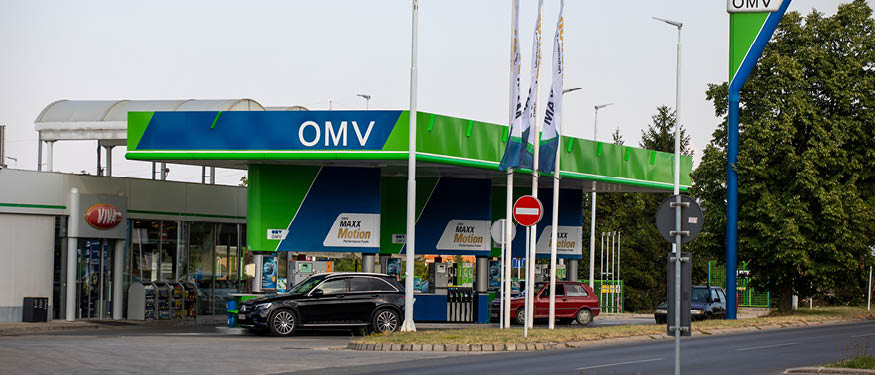With a private practice background spanning over 20 years, John James McVeigh is the CEO and Head Trainer at Nixedonia – a business development company he established in 2015. He shares some of his insights on business development in the CEE legal world.
CEELM: To start, could you tell us a bit about Nixedonia and how it came about?
McVeigh: Back in 2008, when I was employed at DLA Piper, the economy was booming, and we consistently had a queue of clients at our door. We optimistically believed that this prosperous trend would last forever. However, with the onset of the financial crisis, the situation quickly changed – clients began looking for more affordable legal services, and many ceased coming to us at all. This left us with insufficient work for our lawyers. In response to this abrupt shift, I was asked by our Managing Partner to collaborate with other lawyers in our efforts to attract new business. My teaching diploma and MBA, in addition to my legal education, made me a nice fit for this task.
Perhaps unsurprisingly, lawyers were initially quite hesitant about the idea, but I began running a BD training, which involved straightforward steps with lawyers and their clients. It worked well, and I received a promotion to expand this role to more countries. I then discovered that common issues existed across different countries. Later on, I left DLA Piper and continued my work independently with over 500 law firms across Europe, Africa, and other markets, and even turned some of my materials into textbooks. During the pandemic (2020-2022), I worked in-house at Deloitte as the Business Development Manager for Central & Eastern Europe. Since January 2023, I have been back at my own practice, primarily focusing on the CEE region, while being based in Prague.
CEELM: What were the main hurdles you had to overcome initially?
McVeigh: I believe the most significant hurdle was related to fear and conservatism, particularly within the legal profession. Many lawyers lack formal training in commercial skills, and they tend to avoid facing rejections and objections. Overcoming this fear and hesitancy was a significant barrier. However, once they discovered their internal motivation and understood how it was in their best interests, many could transform into rainmakers. When a lawyer realizes they possess particular knowledge, such as in pharmaceuticals or media, and they genuinely enjoy these areas, it’s not challenging for them to become engaged and start contacting CEOs and other key decision-makers. I’ve found that industry-based motivations can be truly inspiring for some lawyers, while surprisingly, financial motivation often doesn’t make a significant difference. Many lawyers still do, unfortunately, struggle with a sales phobia and that needs to be overcome.
CEELM: What have been some of the most effective BD strategies implemented in CEE?
McVeigh: In terms of BD in the region, there are various dynamics to consider, and strategies would depend on the local context. In countries like Poland, it’s a highly competitive environment with firms operating at a more sophisticated level when it comes to presenting themselves and pitching their services. Here, cross-selling and up-selling become feasible strategies. On the other hand, the Baltic states are home to smaller law firms that are experimental and tech-focused, constantly trying new approaches. Many exciting developments are occurring there in niche areas such as AI, blockchain, and the overall technology sector.
In the Balkans and Central Europe, there are ample opportunities for improvement. This includes streamlining processes like document automation and enhancing client engagement (Draftomat being one of the best document automation tools I’ve come across in the region). Building relationships through activities like going to lunch with clients (“Tea for Two” – T42), targeted pitching, and understanding their needs is essential. Soft-pitching is a valuable but often underutilized technique.
Overall, active referrals, where clients introduce you to other companies, at your request, can be highly profitable, especially in the CEE region. In the UK and Canada, cold calls and cold emails may sometimes work, but in CEE, personal recommendations from satisfied clients, especially those connected on platforms like LinkedIn, can be particularly effective.
CEELM: What is the main area you’ve noticed firms need to improve on in their BD?
McVeigh: I would emphasize the importance of being proactive rather than reactive in the legal profession. Most lawyers would agree that if the law has changed, it’s our responsibility to communicate this change, allowing clients to avoid fines or other legal issues. I suggest taking it a step further. If we possess particular strengths, perhaps we can engage with a broader audience, including clients who may not currently work with us. This engagement can take the form of webinars, events, articles, or emails, depending on the country’s rules regarding solicitation.
Moreover, there’s an argument to be made for not waiting until the law changes to inform people. During the pandemic, for example, many e-commerce companies experienced rapid growth. However, some companies grew too quickly without addressing legal concerns. This is where something like a legal E-Commerce Health Check could be valuable. Lawyers can examine a company from a legal perspective, identify any problems, and proactively offer assistance, including in employment, disputes, GDPR and data protection, and even tax-related matters. This approach serves as an example of a proactive strategy, with a spontaneously generated legal product, even when the law remains unchanged. In the CEE region, this practice may be relatively uncommon, but there is a huge opportunity for improvement in such proactive product-based pitching.
CEELM: What is the main recurring challenge your clients mention in their BD efforts?
McVeigh: Managing partners and partners often grapple with the challenge of changing pricing. In many cases, law firms lack “automatic increase” clauses, or even “time premium” clauses, and don’t implement annual price raises. There are several reasons for this. Law firms are cautious about upsetting their clients as this could strain or even sever client relationships. However, it is possible to increase rates without alienating or losing clients. Failing to do so is unsustainable, and it’s not merely a matter of marginal profitability. Clients often appreciate when a law firm offers premium and high-value services. If clients require a premium solution, they should expect to pay a premium price. For instance, in cases involving significant litigation or bankruptcy, price sensitivity shouldn’t be overly high. Just as with a medical procedure, if you were to need an expert surgeon, you would understand that such expertise comes with a premium price tag and isn’t a budget service.
CEELM: Being “client-focused” is certainly not a new concept for law firms – where do you think they tend to fall short of being such?
McVeigh: I believe there’s a significant risk in assuming that everything is fine if the client is not complaining or asking questions. Instead, we should actively engage with the client, put ourselves in their shoes, and view their needs holistically. The client isn’t solely concerned with tax law, or employment law – they care about their entire company from all legal perspectives. The notion of silently going about our practice can be detrimental – instead, it would be more beneficial to adopt a more integrated approach, always involving the client in discussions. Rather than only relying on a T42 approach, which may limit us to a single practice perspective, we might broaden this to aim for “Tea for Three” (T43), providing a more well-rounded perspective and approach to the client, together with another practice colleague (this would be soft cross-selling). Synergistic pitching of two or more practice areas bundled together often results in higher client engagement than sole practice pitching.
CEELM: Ultimately, what would be the main pieces of advice you’d give to any law firm in CEE to enhance its commercial success?
McVeigh: Quite simply, the needs of one law firm may differ from the needs of others. The best way to find the right approach, and to get some recommendations, is to simply reach out to me for a complimentary 30-minute discussion in-person, or via Teams, to explore various ideas and strategies.

















